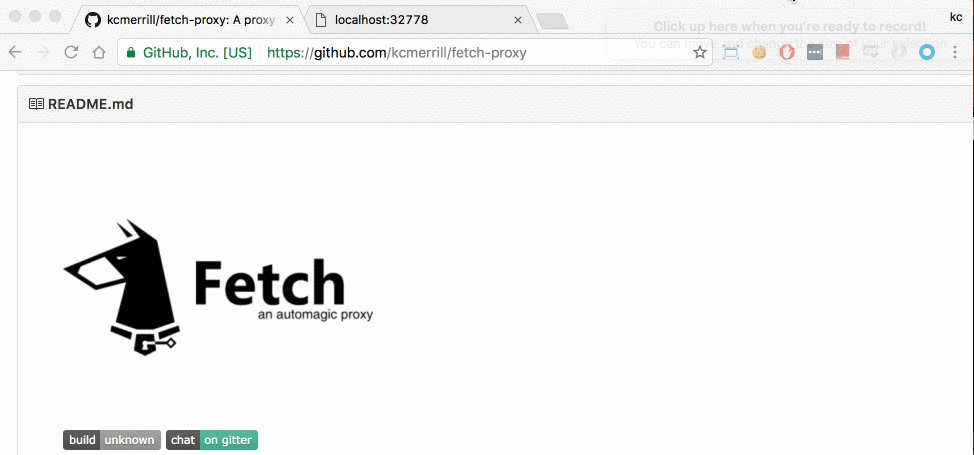Fetch is a simple proxy that automagically routes web traffic to running docker containers to host ports. Great for dev/ci environments. Works great in production for hosts that have web sites running on one machine.
- Healthchecks for services
- Secure connections using lets encrypt
- Default service if mapping not found
- Response timeouts
- Automagically maps new containers
- Ideal for dev environments
- Zero downtime deployments out of the box
or via go:
$ go get github.com/kcmerrill/fetch-proxy
via docker:
$ docker run -d -p 80:80 -p 443:443 -v /var/run/docker.sock:/var/run/docker.sock --restart=always --name fetch-proxy kcmerrill/fetch-proxy --containerized --insecure
Use the --insecure flag if you are working on localhost, else enjoy https:// urls from letsencrypt.org
If you're running fetch-proxy within a container(kcmerrill/fetch-proxy) with an older version of docker, add -e DOCKER_API_VERSION=1.x.x for compatability.
By deploying containers with _ in their names, this denotes different versions to fetch-proxy along with their start times. If you start a container called test_v1.0, test.domain.tld will route traffic to that specific container. If you launch another container named test_v1.1 test.domain.tld will now start taking in that traffic once the container becomes online(via a healthcheck).
Lets say you are not using docker images for some ports, or perhaps you need to map multiple subdomains to one particular port. Simply pass in the config flag, with a location to a config file. This will be used for more later, but for now, create a yaml file with a key of forward and as a multi dimensional array, pass in the subdomain: port. Feel free to update this whenever you'd like, give fetch-proxy a few seconds to read in the new changes and then go to the new subdomain. Here is an example of multiple subdomains going to a single port:
forward:
mystaticpage: 1234
mystaticpage2: 1234
mystaticpage3: 1234Would love to hear it. Email me at kcmerrill [at] gmail [dot] com



